#TransPositivity
Photo

these memories are like scars of my forever siblings— beautiful, radiant, and ever loving 🏳️⚧️🥰 small nyc + la photodump ✨ life this past month has been so magical I genuinely have never felt so alive until being surrounded by the genuine outpours of love from other queer folk 💕 . . . #trans #queer #lgbt #nonbinary #pride #ftm #transgender #hrt #alt #transman #model #transmasculine #transpride #altmodel #selflove #transmodel #asianmodel #nonbinarypride #transisbeautiful #transpositivity #transguy #selfmademan #vitamint #transmanofcolor #qtpoc #nyfw2022 #newyorkfashionweek #losangeles #lax #t4t (at New York - Los Angeles) https://www.instagram.com/p/CjD-p59vAqj/?igshid=NGJjMDIxMWI=
#trans#queer#lgbt#nonbinary#pride#ftm#transgender#hrt#alt#transman#model#transmasculine#transpride#altmodel#selflove#transmodel#asianmodel#nonbinarypride#transisbeautiful#transpositivity#transguy#selfmademan#vitamint#transmanofcolor#qtpoc#nyfw2022#newyorkfashionweek#losangeles#lax#t4t
86 notes
·
View notes
Text
The history of transgender people
The history of transgender people is complex and varied, stretching back to ancient civilisations and continuing through to the present day. While there is no single narrative that can capture the full breadth of transgender experience, there are certain key moments and figures that have helped shape our understanding of gender identity and expression.
One of the earliest recorded examples of transgender identity comes from the ancient Sumerian civilisation in Mesopotamia, where priests and priestesses of the goddess Inanna would sometimes dress in clothing associated with the opposite sex and perform rituals that blurred traditional gender boundaries. In other cultures, such as the Native American tribes of the Two-Spirit tradition or the hijra communities of India, individuals who did not conform to traditional gender roles were often revered as having special spiritual or healing powers.
The modern concept of transgender identity emerged in the mid-20th century, when medical professionals began to recognise that some people experienced a persistent and distressing sense of incongruity between their gender identity and the sex they were assigned at birth. This led to the development of gender-affirming medical treatments such as hormone therapy and gender confirmation surgery.
One of the earliest known examples of gender-affirming medical treatment took place in Germany in the 1920s, when Dr. Magnus Hirschfeld established the Institute for Sexual Science in Berlin. The institute offered medical and psychological support to people who experienced gender dysphoria, as well as advocating for legal and social recognition of transgender identity.
Unfortunately, the institute was destroyed by the Nazis in 1933, and many of its patients and staff members were killed or forced into hiding. It was not until the 1950s and 60s that transgender identity began to be more widely recognized in Western medical and psychological circles, thanks in part to the pioneering work of researchers such as Dr. Harry Benjamin.
In 1952, Benjamin published "The Transsexual Phenomenon," which outlined a clinical framework for understanding and treating gender dysphoria. He argued that transgender people should be allowed to access medical interventions such as hormone therapy and gender confirmation surgery in order to align their bodies with their gender identity, and he helped establish the standards of care that are still used by many medical professionals today.
Throughout the 20th century, transgender people faced significant discrimination and marginalisation, particularly in the United States. Laws and social norms restricted their access to healthcare, education, employment, and other basic rights, and they were often subject to harassment and violence.
In the 1960s and 70s, however, transgender activists began to organise and advocate for their rights, paving the way for greater recognition and acceptance of transgender identity in the decades that followed. In 1975, for example, the first international conference on transgender rights was held in Atlanta, Georgia, bringing together activists from around the world to share their experiences and strategies.
Today, transgender people continue to face many challenges, including discrimination, violence, and lack of access to healthcare. However, there have also been significant gains in terms of legal protections and social acceptance, particularly in many Western countries. Transgender celebrities such as Laverne Cox and Caitlyn Jenner have helped to raise awareness and visibility of transgender issues, and many organisations and advocacy groups are working to promote transgender rights and equality.
The history of transgender people is one of resilience and resistance, as individuals and communities have fought to assert their identities and secure their rights. While there is still much work to be done, the progress that has been made in recent decades provides hope for a more inclusive and just future.
#trans#lgbtq+#lgbtqia+#lgbtq#transgender#ftm#nonbinary#nonbinarymemes#transpride#transpositivity#protecttranskids#lovetranskids#transkids#transyouth#supporttranskids#lgbtq+pride#transgender pride#transfamilies#transparent#transrights#transkidsarekids
9 notes
·
View notes
Text
What is it supposed to feel like?
One of my most humbling experiences was when I asked my friend, “what do you think gender dysphoria feels like?” Nothing could have prepared me for what she was going to say. “I am not sure, I guess it’s feeling that you’re in the wrong body?”
I felt myself get angry because of how many times I explained it to her. So many horrible thoughts ran in my head as I felt myself heat up. I sighed, mentally taking a step back and realizing the only person I am mad at is only myself. It was not her fault, but I did not know where the pain in my heart came from.
Within seconds, I looked at her replying “you aren’t wrong, but that isn’t the most part.” Memories flooded in reminding me how hard I tried to explain my dysphoria to her, but I ended up struggling. I never found the right words to explain the heaviness lingering on my heart, the pain that inhabited inside my gut, the feeling your soul and brain being detached from your body or seeing a random a male stranger in public and feeling attached to them because of how masculine presenting they are.
“I wish I could explain it in detail, but it’s difficult for me to.” I felt the cartilages of my throat tighten, making me struggle to speak or breathe. I stayed quiet for a moment, waiting for this horrible feeling to leave my body.
I remind myself every now and then that not everyone feels the same as me. Other people, unlike me, did not grow up wanting to “look like the other gender” or had that “sudden change of clothing” that my mom refused to get me in the store. Back then, I didn’t know what that feeling was and why I felt uncomfortable in my own skin.
Those feelings, I could not interpret and still cannot until today, were only mine and no one else. Not for someone who felt euphoric and comfortable in their own body. My one and only wish is to have these happy and good feelings towards my own body.
4 notes
·
View notes
Text
Tumblr can have a cute selfie, as a treat
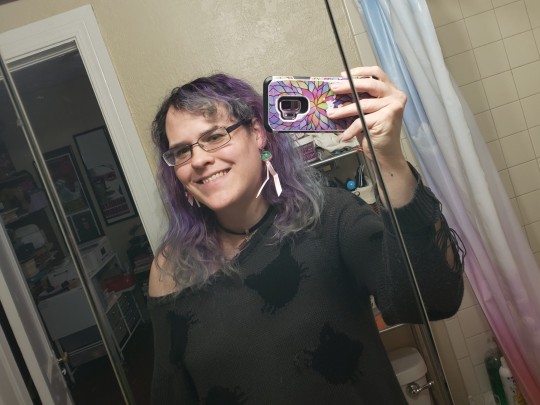
7 notes
·
View notes
Text

Honestly pretty tired of transphobes who can't seem to wrap their head around the idea of a child having their own thoughts and feelings about themselves & their gender.
[x]
#protecttranskids#theythem#lgbtequality#transpositivity#lgbtpositivity#enbypride#transrights#transrightsarehumanrights#transrightsmatter#transrightsarehumanrights🌈#transrightsnow#protecttransrights#supporttransrights#transrightsarehumansrights#lgbtq#lgbt#transgender#trans#pride#queer#nonbinary#transisbeautiful#translivesmatter#lgbtrights#transgenderpride#transcommunity#transguy#lgbtq🌈#lgbtqia#lgbtqpride
7 notes
·
View notes
Photo

So humble yourselves before God. Resist the devil, and he will flee from you. James 4:7 NLT #trans #transgirls #mtftransgender #transgender #transpositivity #transgenderwoman #transwoman #transwomen #transrights #transrightsarehumanrights #transwomenarewomen #translivesmatter #transrightsmatter #transmemes #transgirlsrvalid #transgirlsofinstagram #transvisibility #lgbtq https://www.instagram.com/p/Cnphk_dLEBY/?igshid=NGJjMDIxMWI=
#trans#transgirls#mtftransgender#transgender#transpositivity#transgenderwoman#transwoman#transwomen#transrights#transrightsarehumanrights#transwomenarewomen#translivesmatter#transrightsmatter#transmemes#transgirlsrvalid#transgirlsofinstagram#transvisibility#lgbtq
3 notes
·
View notes
Photo

🇪🇦 Me ha gustado este banco. A ver cuando puedo venir como mi auténtico yo. . 🇬🇧 liked this bench. Let's see when I can come as my authentic self. #transgender, #transgenero, #transwoman, #mujertrans, #transgirl, #tgirl, #trans, #transproud, #transisbeautiful, #transbeauty, #translesbian, #spanishgirl, #girlslikeus, #thisisme, #estasoyyo, #transpositivity, #selflove, #behappy, https://www.instagram.com/p/CnXDV-Iosur/?igshid=NGJjMDIxMWI=
#transgender#transgenero#transwoman#mujertrans#transgirl#tgirl#trans#transproud#transisbeautiful#transbeauty#translesbian#spanishgirl#girlslikeus#thisisme#estasoyyo#transpositivity#selflove#behappy
0 notes
Text
#transgender#lesbian#taurus#instagram#rollerskating#girlslikeus#girlswhoshred#girlswhoskate#rollerskate#skateanddestroy#skatelikeagirl#skatergirl#thisiswhattranslookslike#transpositivity#transpower#transvisibility#girlsshredclips
0 notes
Text
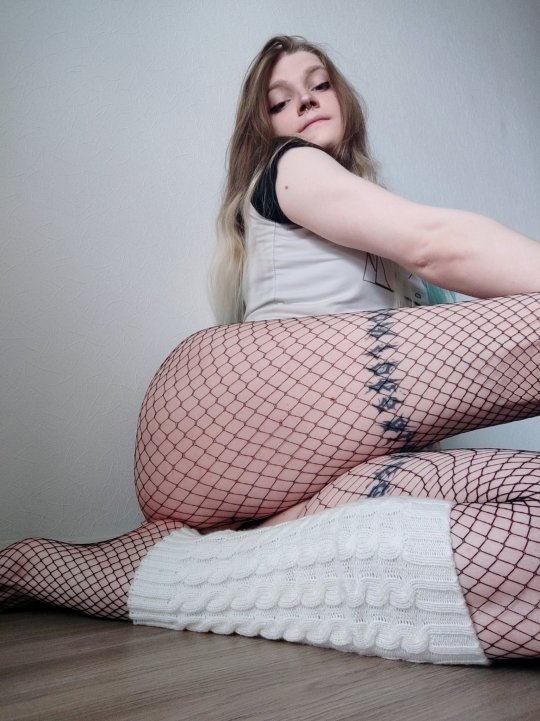
I'm available 24/7
755 notes
·
View notes
Text

Cuppetelli & Mendoza: Transposition (2013)
678 notes
·
View notes
Photo

💰 💰 💰 • Outfit 2/2 • 👕 @lifecustoms 📸 @reflectionsbyfayseen Show @unitedtfs Producer @farhanmch . . . #trans #queer #lgbt #nonbinary #pride #ftm #transgender #hrt #alt #transman #model #transmasculine #transpride #altmodel #selflove #transmodel #asianmodel #nonbinarypride #transisbeautiful #transpositivity #transguy #selfmademan #vitamint #transmanofcolor #qtpoc #lafw2022 #losangelesfashionweek #losangeles #lifecustoms #unitedtogetherfashionshow (at Los Angeles, California) https://www.instagram.com/p/Ck9C_AcS7Ij/?igshid=NGJjMDIxMWI=
#trans#queer#lgbt#nonbinary#pride#ftm#transgender#hrt#alt#transman#model#transmasculine#transpride#altmodel#selflove#transmodel#asianmodel#nonbinarypride#transisbeautiful#transpositivity#transguy#selfmademan#vitamint#transmanofcolor#qtpoc#lafw2022#losangelesfashionweek#losangeles#lifecustoms#unitedtogetherfashionshow
8 notes
·
View notes
Text
Gender Dysphoria and the Self-concept
Navigating the Challenges of Identity
Introduction
The human experience is a complex tapestry of emotions, thoughts, and perceptions, and at the core of this intricate web lies the concept of self. Our self-concept, the way we perceive and understand ourselves, plays a vital role in shaping our identities and how we relate to the world. However, for individuals experiencing dysphoria, this relationship with the self can become a source of immense struggle. In this blog post, we will delve into the concept of dysphoria and its profound impact on the self-concept.
Understanding Dysphoria
Dysphoria refers to a state of profound unease or dissatisfaction. It can manifest in various forms, but one of the most commonly discussed is gender dysphoria. Gender dysphoria occurs when there is a disconnect between an individual's gender identity and the sex assigned at birth. This dissonance can give rise to feelings of distress, anxiety, and discontentment.
Impact on the Self-Concept
Dysphoria profoundly affects the self-concept of individuals grappling with gender identity issues. The self-concept, which encompasses beliefs, values, and one's understanding of who they are, can be thrown into turmoil when it clashes with society's expectations or one's physical appearance. The incongruence between a person's internal sense of self and their external presentation can lead to a fractured self-image and a profound sense of being out of place.
Challenges and Internal Conflicts
Individuals experiencing dysphoria often struggle with conflicting thoughts and emotions regarding their identity. The dissonance between their true gender identity and societal expectations can lead to internal battles, self-doubt, and a constant questioning of their authenticity. This struggle can erode self-confidence and impact various aspects of life, including relationships, professional pursuits, and overall well-being.
Seeking Self-Acceptance and Authenticity
A crucial aspect of navigating dysphoria and reclaiming a positive self-concept lies in seeking self-acceptance and embracing one's authentic identity. It requires acknowledging and honoring one's true gender identity, regardless of societal norms or expectations. This process involves self-exploration, self-reflection, and seeking support from understanding individuals, such as therapists, support groups, or friends and family.
External Factors and Societal Influence
Societal attitudes and stigmas surrounding gender dysphoria can significantly impact the self-concept of individuals experiencing dysphoria. Discrimination, lack of acceptance, and the invalidation of one's identity can exacerbate feelings of distress and erode self-esteem. Society's expectations and rigid gender norms can create barriers to self-acceptance, making it essential to challenge these constructs and advocate for more inclusive and accepting environments.
Supportive Interventions and Therapeutic Approaches
Therapeutic interventions play a vital role in supporting individuals with dysphoria to navigate their journey towards self-acceptance and a positive self-concept. Therapists specialising in gender identity issues employ various approaches, such as Cognitive-Behavioral Therapy (CBT), mindfulness practices, and gender-affirming counseling, to help individuals develop coping strategies, challenge negative self-beliefs, and foster self-compassion. These interventions provide individuals with tools and support to navigate the complexities of their self-concept and overcome the challenges presented by dysphoria.
Conclusion
Dysphoria, particularly gender dysphoria, represents a significant challenge to the self-concept of individuals. The incongruence between one's true gender identity and societal expectations can lead to profound feelings of distress and discontentment. However, through self-exploration, self-acceptance, and support from understanding individuals and therapeutic interventions, individuals experiencing dysphoria can reclaim their self-concept and embrace their authentic identity. It is vital for society to foster an inclusive and accepting environment, free from stigmas and discrimination, to empower individuals to navigate their journey towards self-acceptance and live authentically.
#trans#lgbtq+#lgbtqia+#lgbtq#transgender#ftm#nonbinary#nonbinarymemes#transpride#transpositivity#protecttranskids#lovetranskids#transkids#transyouth#supporttranskids#lgbtq+pride#transgender pride#transfamilies#transparent#transrights#transkidsarekids
1 note
·
View note
Text
Been on HRT for about a year and a half but just switched to E injections (which my wife has dubbed: "stab-E"). My sister-in-law (nurse) did the first one last week. I just did it myself for the first time! I was so anxious I nearly threw up, but I did it! Just wish my hands hadn't been so shaky, would probably be a lot less sore now. Whatever I'm proud of myself.
Also, I got my date for bottom surgery this week!!!
Now if you'll excuse me, I'm gonna go snug my Blåhaj.
#trans pride#trans#transgender#trans women#mtf trans#traaaaaaannnnnnnnnns#trans and thriving#trans community#transpositive#trans fem#trans femme#trans girl#trans joy#trans mtf#trans positivity#trans woman#transandthriving#transition
117 notes
·
View notes
Text
I was rethinking about how important the use of cultural details is when doing fairytale reinterpretations or adaptations. It is a way of adapting that people tend to forget due to some sort of general agreement that fairytales should escape any type of time-space setting and feel just like a "generic pseudo-medieval pseudo-European" world (except of course if they are set in modern day America, because for the US media the USA is, of course, a setting deemed "universal" enough that should speak to everybody... *cough cough* americanocentrism *cough cough*)
It was something I was already thinking about some times ago, ever since I discovered the Royal New Zealand Ballet's Hansel and Gretel, which has lots of very cool references to various states of German culture, ranging from cinema (the aesthetic of the setting, characters and special effects is meant to evoke the classic mute expressionist movies such as "Nosferatu" or "The Cabinet of Doctor Caligari")...
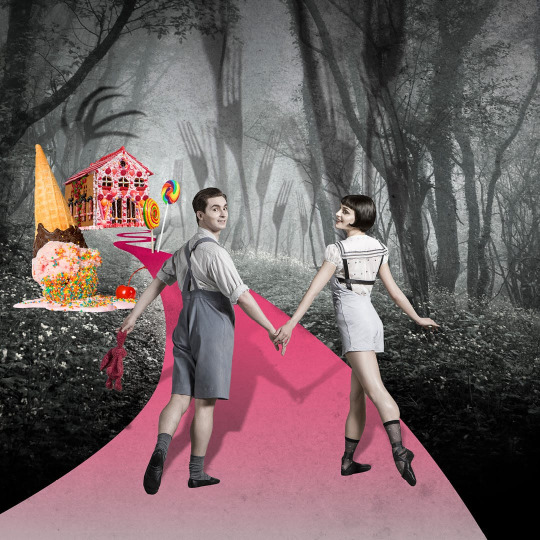
... to folklore (the show made the insanely clever decision of replacing the bird eating the crumbs in the forest with schnabelperchten brooming them away).
And more recently I have been looking into a 1930 black-and-white French movie called "Cinderella of Paris", that transposes/twists/parodies the Cinderella story within the context of the realistic 1920s Paris.
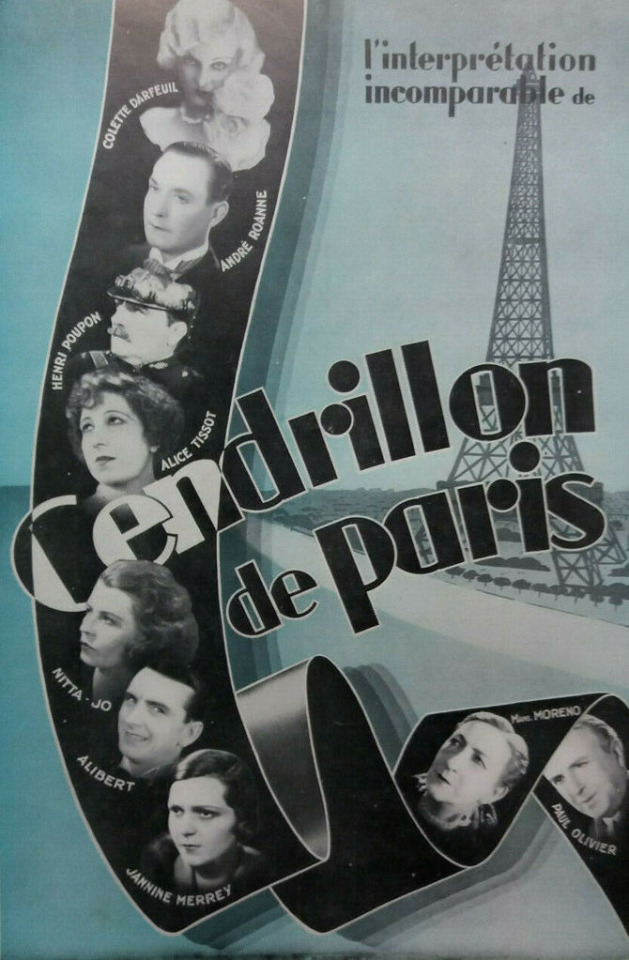
And the main ball, the equivalent of the titular Cinderella ball, is made into the Sainte-Catherine dance. Which is absolutely fitting and perfect for a Cinderella within an inter-war Paris. If you don't know, up until the mid-20th century, in France Saint Catherine's day was the time of a great popular ball/public dance whose entire purpose was to allow girls of 25 years old or more, yet without a male companion, to find a suitor/husband/boyfriend/fiancé. It was the big time to "solve the problem of the old maids", of which Saint Catherine was the patron - and it was THE big "love day" long before the overwhelming Americanization of Saint Valentine's Day.
All of that to say, I really love the inclusion of little cultural details and elements within fairytales retelling or transpositions - either of the original fairytale's culture, or of the culture in which the fairytale is transposed. Not only does it make the product quite cool, clever and/or interesting, but it also shows that you put a lot of thought into the tale's original setting and the point of moving up to another time period or geographical era. It is the opposite of just slapping a "That's X country" or "That's X time" sticker onto a fairytale without doing much more work.
#fairytales#fairy tales#fairytale adaptations#hansel and gretel#cinderella#cendrillon de paris#royal new zealand ballet#rnzb's hansel and gretel#royal new zealand ballet's hansel and gretel#fairytale transpositions
25 notes
·
View notes
Note
You like Miraculous Ladybug and the Professor Layton games, and you write fanfic.
Have you considered writing a crossover of the two?
Oh oh. Not just one.
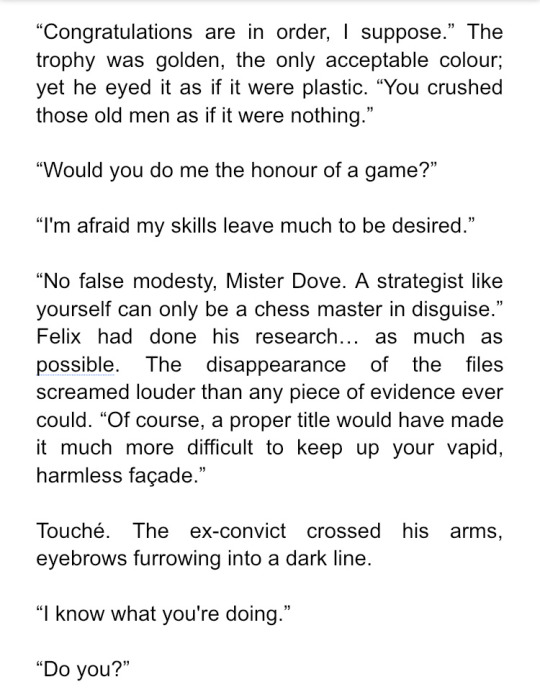
TWO:
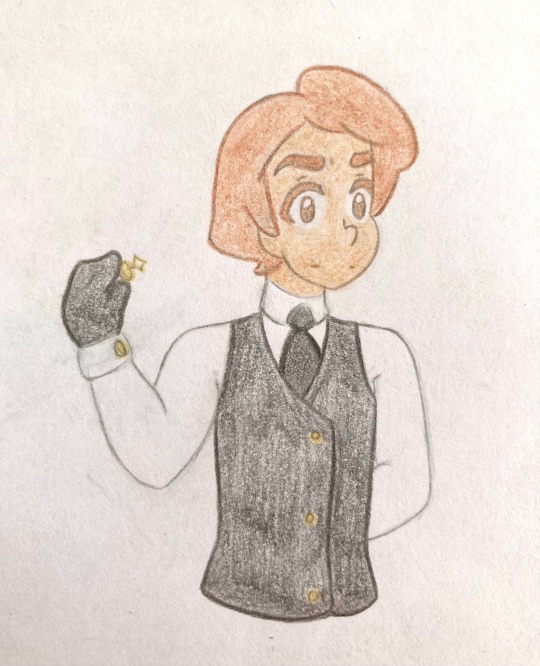

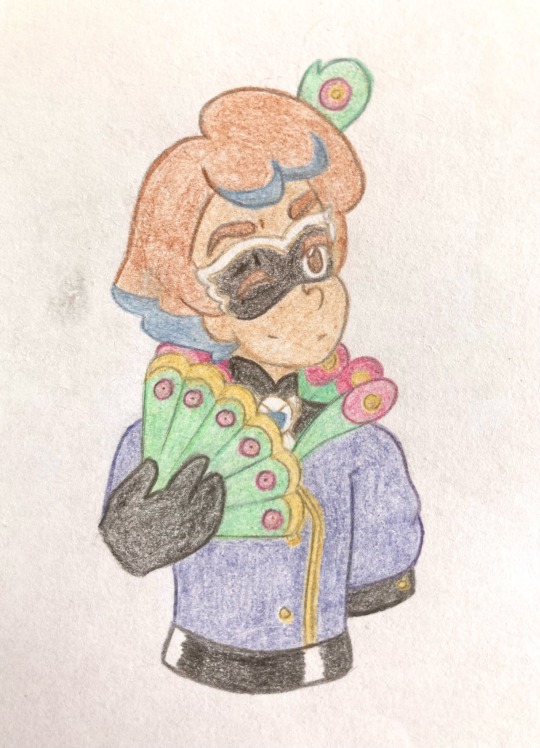

#First one is my favourite feathers interacting 🕊️🦚#It’s the easy relaxing fic I write as a treat to myself#The second one will call for more work as it will be a full transposition of the Layton characters in the Miraculousverse#But look how handsome Clive looks with the Peacock! 💙🕊️🦚#professor layton#clive dove#panoptes#emmy altava#shinryū#clemmy#miraculous ladybug#felix graham de vanily#nina writes#nina draws#tumbl asks
18 notes
·
View notes
